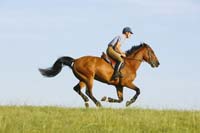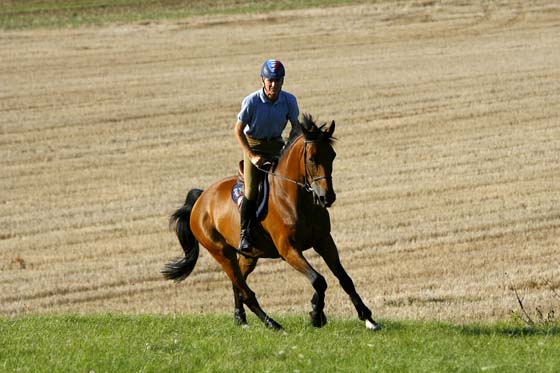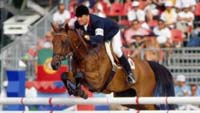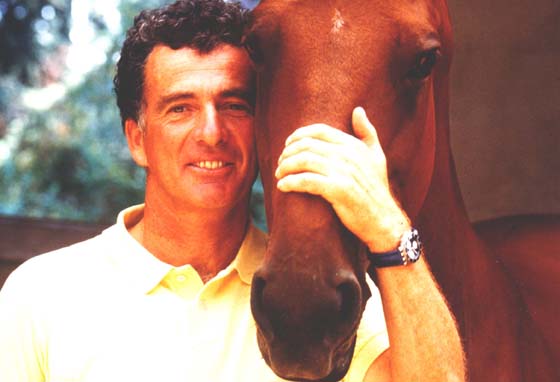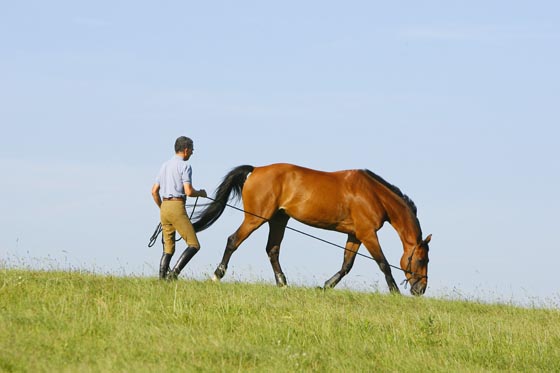How to control the speed and stay in harmony with the horse’s locomotion
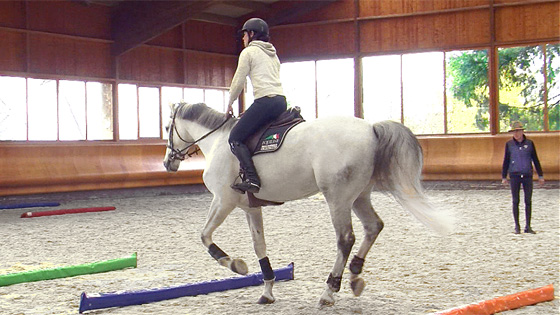
This comprehensive exercise is excellent to encourage the riders to be disciplined in their position and their capability to follow a precise path, to anticipate their actions, to maintain the movement forward and control the speed.
This comprehensive exercise is excellent to get riders to be disciplined in their position, their track and to plan ahead of time while following the forward movement yet controlling the speed. This last point will be the main goal of this first step of the exercise. The ability of the rider to control the speed of the horse while following the horse’s motion is crucial to be successful in most disciplines (jumping course, dressage test…). The main mistake we see, is when riders ask for a transition but then, freeze their request which results in horses who can’t understand them and become defensive: Getting above the bit, speeding up, refusing, bursting forward, bucking…
The goal of this session is to gain good reflexes resulting in smooth transitions in harmony with the cadence of the horse for each gait.
This exercise is linked to the sheet CA3 of the booklet Training program 1
Michel teaches Sélène who rides Surf de la Cense. The exercise starts with slower gaits to introduce the path to the rider and horse. The idea is to get the rider accustomed to the track and the flow of the movement at a walk and a trot. The set-up with ground poles marks the path with precision.
To follow Michel’s instructions, Selene doesn’t have a choice but to plan mentally and physically each part of the track ahead of time. She needs to stay mentally active while planning for the next move.
After practising a couple of times at a slower gait, Selene practises at a trot and a canter. Michel adjusts the set-up to favour the correct cadence at each gait.
To Michel, Selene’s work is excellent and should be a reference for any rider. The slow motion sequences of the video are very useful to the viewers to get the correct feel for it.

